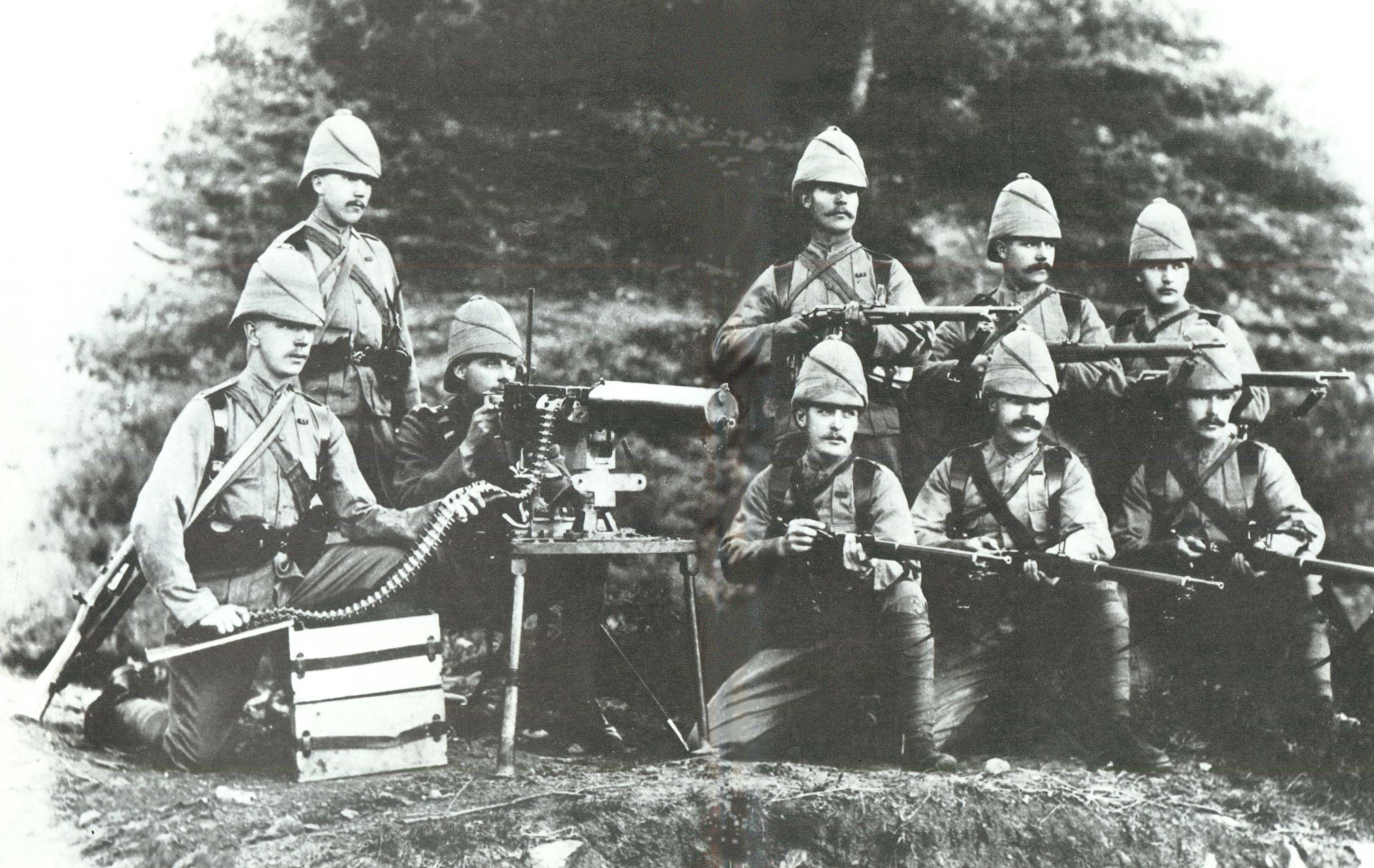
Whatever happens we have got
the Maxim gun and they have not. — Hillaire Belloc, 1898
These are the instruments that have revolutionized the methods of warfare, and because of their devastating effects, have made nations and rulers give greater thought to the outcome of war before entering … (The New York Times, 1897)
That quote from The Times is taken from an article posted over at The Atlantic on the development of the Maxim gun, the first modern machine gun, capable of firing 666 rounds in under a minute and responsible for the slaughter of countless numbers of natives in Europe’s endless wars of empire and millions of soldiers who advanced stoically to their deaths on the battlefields of the First World War.
The irony, of course, as The Atlantic points out, is that this new weapon was thought to be so murderously effective that nations would settle their disputes diplomatically for fear of the horrors of war that it could unleash. We know how that really turned out.
The belief that more weapons, newer weapons, better weapons, more deadly effective weapons, can make us safer, and the dangerous dynamic of the security dilemma that this thinking triggers, is a staple of the academic literature on international security. And as my friend Bill Ayres regularly discusses on his own blog (for instance here), this belief regularly results in tragedy when we apply its logic to firearms and the quest for personal protection.
But the beat goes on, from the Maxim gun to ever more modern nuclear warheads, each new advance in weapons technology intended to make us safer than the last, and at the same time making us feel less and less secure. At some point we may reach the logical conclusion of such a progression. And then Dr. Strangelove will move from the realm of satire to that of prophesy.